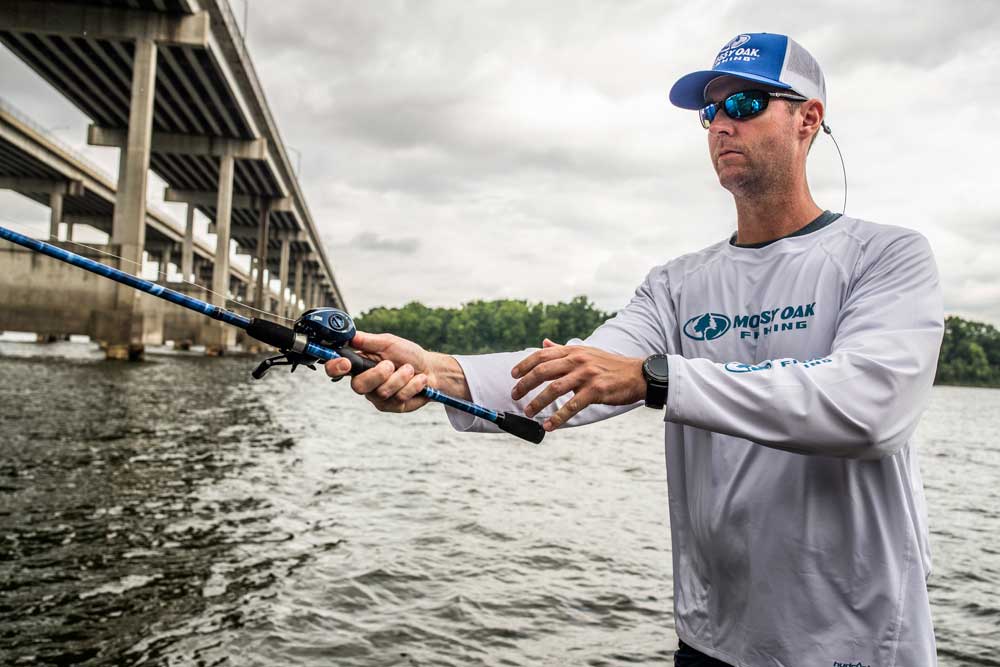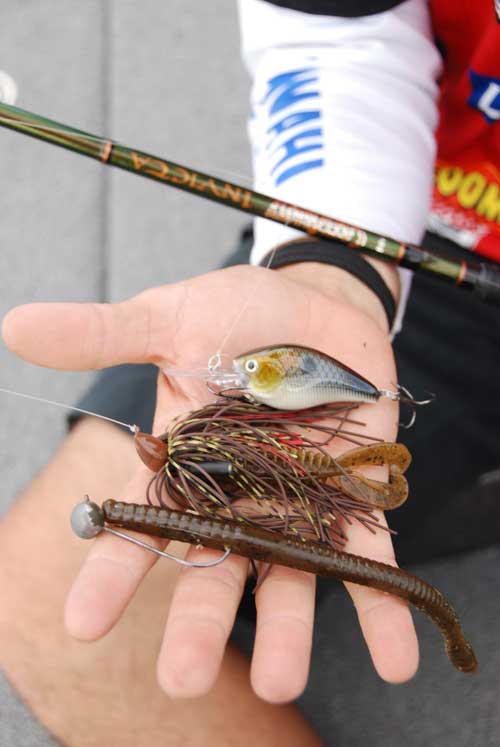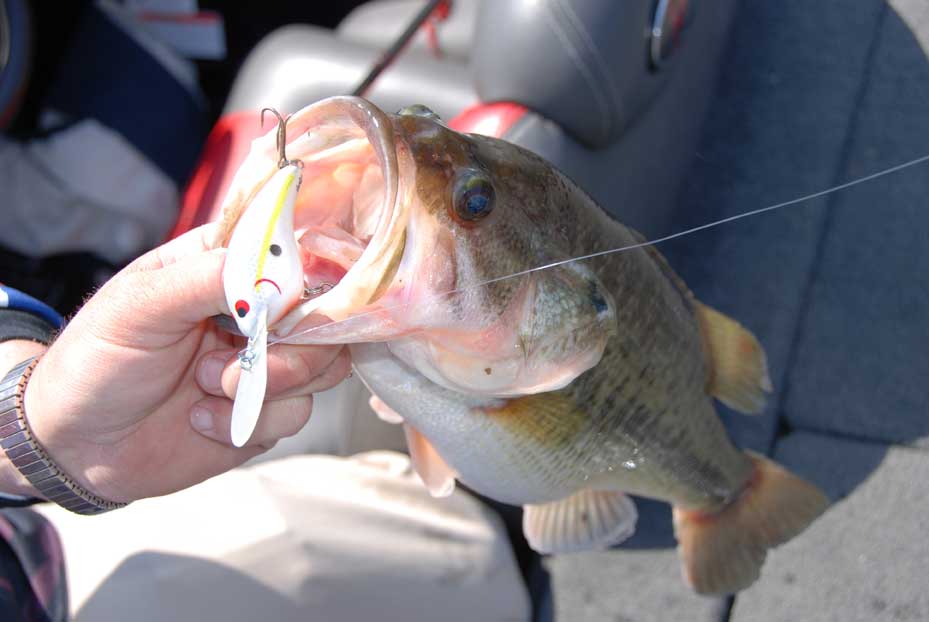Phillip Gentry

Late summer/early fall can be a daunting time to target black bass. Depending on the area and lakes you fish, particularly in the South, black bass can be difficult to catch for the simple reason of so much water overhead.
For the purposes of discussion, deep water means 25 feet plus. In hill land and high land reservoirs, 25 feet may be considered shallow, but the reasoning still stands regarding how and where anglers need to present baits to reach these fish.
Boat positioning is generally pretty important in all bass fishing situations, but in targeting bass in deep water situations, boat positioning is critical. This is partially due to allowing a “lead” of how much distance it takes the bait to get down to the fish.
How To Catch Largemouth Bass in Deep Clear Lakes
Drop-shotting
Drop shotting is a great deep-water presentation because it allows the bass angler to get right over the top of the fish and present a bait in a natural manner. Drop shotting is often referred to as a finesse tactic because the bait is presented in a natural, non-aggressive manner, which is often key to getting finicky bass to bite.
When setting up to present a drop shot, mark fish on the graph and then position the boat directly overhead or slightly in front if there is current to contend with. The key is to start the bait out in front of the fish and walk it back to them rather than dumping it on their head. For this reason, many anglers prefer to use spinning tackle, which can be paired with lighter line.

Shaky-Head or Bobble Head Jigs
Most bass fishing jigs could be grouped in this category although the shaky head or bobble head jig seems to be the most popular deep-water jig head these days. It’s hard to fish bass jigs wrong, but it is a bit challenging to fish them exactly right.
Jigs can be dropped on the intended targets and short hopped in place or cast parallel to structure and worked back to the boat. They can also be aggressively hopped or swum back to the boat or retrieved until they connect with structure, then basically vibrated in place to illicit a response.
Carolina Rigging
Carolina rigging for bass has taken somewhat of a backseat with the popularity of the drop shot and forward-facing sonar. Often considered a search tool, the need for blind searching diminishes with the availability of real time sonar.
Regardless, Carolina rigging, where the weight bumps along the bottom with a 2 – 3-foot leader trailing behind, has its uses. At the top of the list are bridge pilings and deep-water stump field situations where bass are moderately active and suspended off the bottom.
Cast the Carolina rig, paired with floating or at least neutrally buoyant soft plastics, parallel to the edges of bottom structure and work it at a slow retrieve back to the boat. Novice anglers often underestimate the distance required to back off of the targeted area. The goal is to move the bait in short hops back to the boat. Not allowing enough distance will create an unintended swing on the hop, moving the bait faster than intended.
Deep Water Cranking

Of the strategies listed so far, drop shotting is typically the slowest presentation, followed by the shaky head, then the Carolina-rig retrieve. When cranking deep water targets using deep diving crankbaits, at least a moderate retrieve is required to allow the bait to dive to the prescribed depth.
Prescribed depths are indicated on the packaging of most commercially made crankbaits. In order to achieve this depth, the bait has to be cast far enough beyond the target to allow for “running room” to get the bait to the prescribed depth.
Another important consideration is that the bait is properly tuned so that it runs straight and not off to one side which will affect both the action and the diving depth of the bait.
Another aspect of deep-water cranking is lipless, sinking crankbaits. These baits can be cast long distances and zig-zagged back to the boat after using a countdown to achieve the proper depth. They can also be fished vertically or mostly vertically using a jigging motion to cover a smaller targeted area.




























